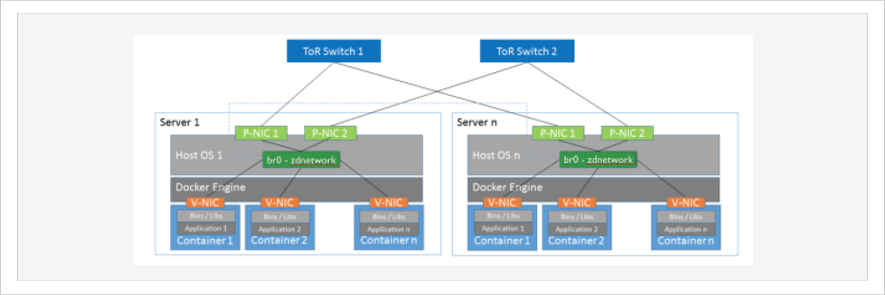
For instance, you might use the following command to create a transparent network with a VLAN ID of 11: C:\> docker network create -d transparent -o .vlanid=11 MyTransparentNetwork To set a VLAN ID for a network, use the option, -o .vlanid= to the docker network create command.

#Docker ip assignment drivers#
C:\> docker network create -d transparent -o .interface="Ethernet 2", "Ethernet 3" TeamedNetĪpplies to transparent and l2bridge network drivers You can take advantage of Switch Embedded Teaming when creating container host networks for use by Docker by specifying multiple network adapters (separated by commas) with the -o .interface option. Switch Embedded Teaming with Docker Networks

#Docker ip assignment driver#
Several network driver options are supported to take advantage of Windows-specific capabilities and features. TX packets:238 errors:0 dropped:0 overruns:0 carrier:0 RX packets:238 errors:0 dropped:0 overruns:0 frame:0 TX packets:6347549 errors:0 dropped:0 overruns:0 carrier:0 TX packets:1586308 errors:0 dropped:0 overruns:0 carrier:0 RX packets:6750867 errors:0 dropped:80 overruns:0 frame:0 UP BROADCAST RUNNING MULTICAST MTU:1500 Metric:1 Go version (server): gccgo (GCC) 5.0.0 20150118 (experimental)īridge name bridge id STP enabled interfacesīr0 Link encap:Ethernet HWaddr 6c:ae:8b:6a:af:64 If no hostname is assigned via the command line (-h) to start the container, it will use the randomly assigned hostname TX packets:0 errors:0 dropped:0 overruns:0 carrier:0 RX packets:0 errors:0 dropped:0 overruns:0 frame:0 TX packets:46 errors:0 dropped:0 overruns:0 carrier:0 RX packets:231 errors:0 dropped:26 overruns:0 frame:0 Which it does, but even after removing it issues are still seen. Kernel: audit: type=1400 audit(1434148604.621:124): apparmor="DENIED" operation="getattr" info="Failed name lookup - disconnected path" error=-13 profile="/usr/sbin/ntpd" name="var/lib/docker/aufs/diff/eb00895db3d297979df741cd560ccbea2ab4d572264bd703fc6cbc7ea2acb5c4/usr/lib" pid=30955 comm="ntpd" requested_mask="r" denied_mask="r" fsuid=0 ouid=0ĭocker also assigns the container an address on the same subnet as my network.Īt first I though it was simply adding a line to the /etc/hosts file of the container. Kernel: device veth122d9f8 left promiscuous mode Kernel: br0: port 3(vethb228701) entered disabled state Error messages such as this are seen in the logs of the host: The responding address while ping'ing container, can change. Which will cause networking issues as it can/will assign addresses that are already in use on the network. (How to I stop this?)Įven more troubling is that it will now use the IP scheme of the bridged network.

The problem is Docker will continue to assign IP addresses on its own. I'm able to assign static addresses to each of the containers via their /etc/network/interface files. I have DOCKER_OPTS="-b=br0" configured in the /etc/default/docker file. I would like to configure Docker containers to look and feel like a real system by assigning them static IP addresses on my network.Ĭurrently I have a network bridge setup (br0) on the host.


 0 kommentar(er)
0 kommentar(er)
